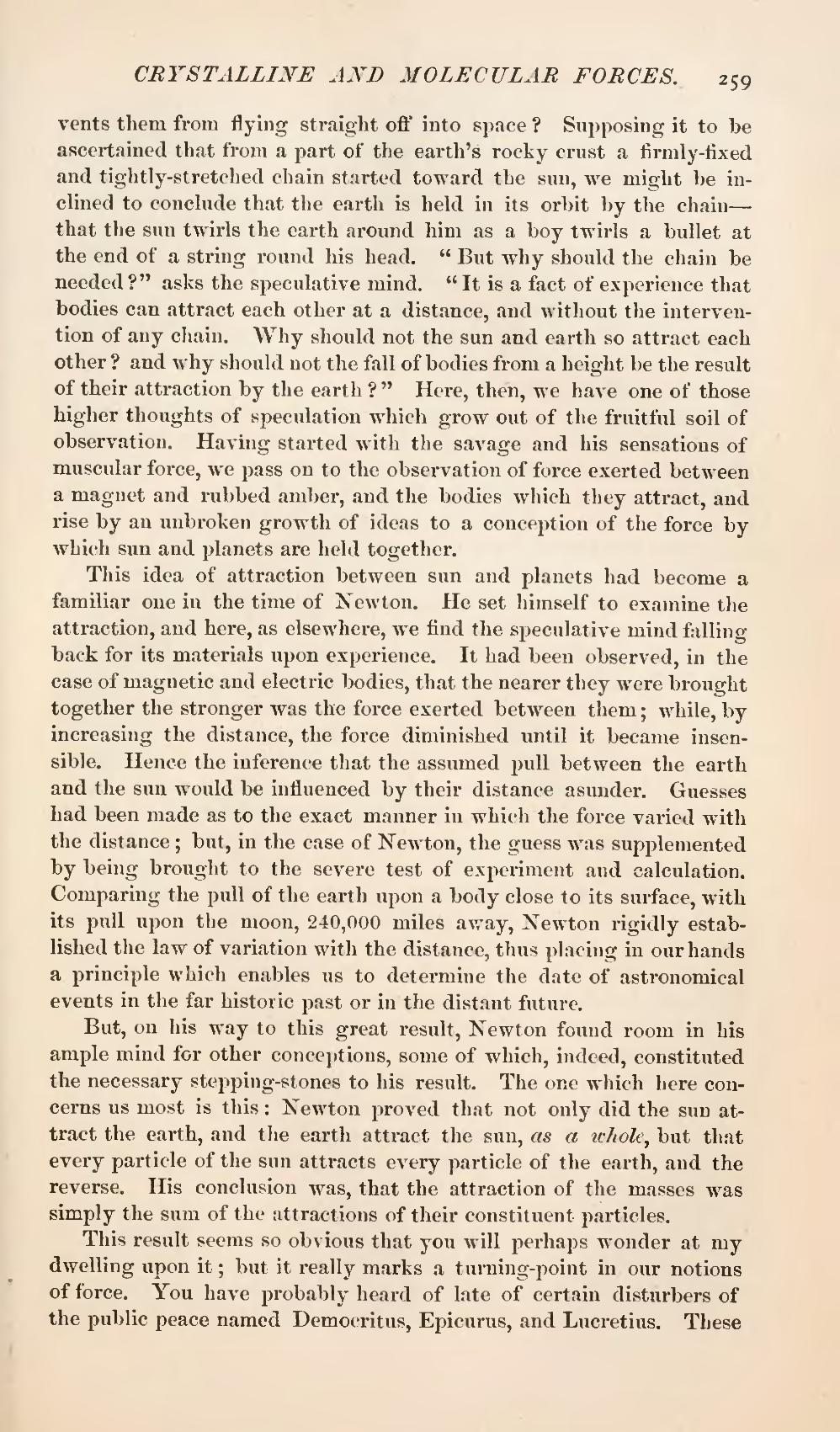vents them from flying straight off into space? Supposing it to be ascertained that from a part of the earth's rocky crust a firmly-fixed and tightly-stretched chain started toward the sun, we might be inclined to conclude that the earth is held in its orbit by the chain—that the sun twirls the earth around him as a boy twirls a bullet at the end of a string round his head. "But why should the chain be needed?" asks the speculative mind. "It is a fact of experience that bodies can attract each other at a distance, and without the intervention of any chain. Why should not the sun and earth so attract each other? and why should not the fall of bodies from a height be the result of their attraction by the earth?" Here, then, we have one of those higher thoughts of speculation which grow out of the fruitful soil of observation. Having started with the savage and his sensations of muscular force, we pass on to the observation of force exerted between a magnet and rubbed amber, and the bodies which they attract, and rise by an unbroken growth of ideas to a conception of the force by which sun and planets are held together.
This idea of attraction between sun and planets had become a familiar one in the time of Newton. He set himself to examine the attraction, and here, as elsewhere, we find the speculative mind falling back for its materials upon experience. It had been observed, in the case of magnetic and electric bodies, that the nearer they were brought together the stronger was the force exerted between them; while, by increasing the distance, the force diminished until it became insensible. Hence the inference that the assumed pull between the earth and the sun would be influenced by their distance asunder. Guesses had been made as to the exact manner in which the force varied with the distance; but, in the case of Newton, the guess was supplemented by being brought to the severe test of experiment and calculation. Comparing the pull of the earth upon a body close to its surface, with its pull upon the moon, 240,000 miles away, Newton rigidly established the law of variation with the distance, thus placing in our hands a principle which enables us to determine the date of astronomical events in the far historic past or in the distant future.
But, on his way to this great result, Newton found room in his ample mind for other conceptions, some of which, indeed, constituted the necessary stepping-stones to his result. The one which here concerns us most is this: Newton proved that not only did the sun attract the earth, and the earth attract the sun, as a whole, but that every particle of the sun attracts every particle of the earth, and the reverse. His conclusion was, that the attraction of the masses was simply the sum of the attractions of their constituent particles.
This result seems so obvious that you will perhaps wonder at my dwelling upon it; but it really marks a turning-point in our notions of force. You have probably heard of late of certain disturbers of the public peace named Democritus, Epicurus, and Lucretius. These

